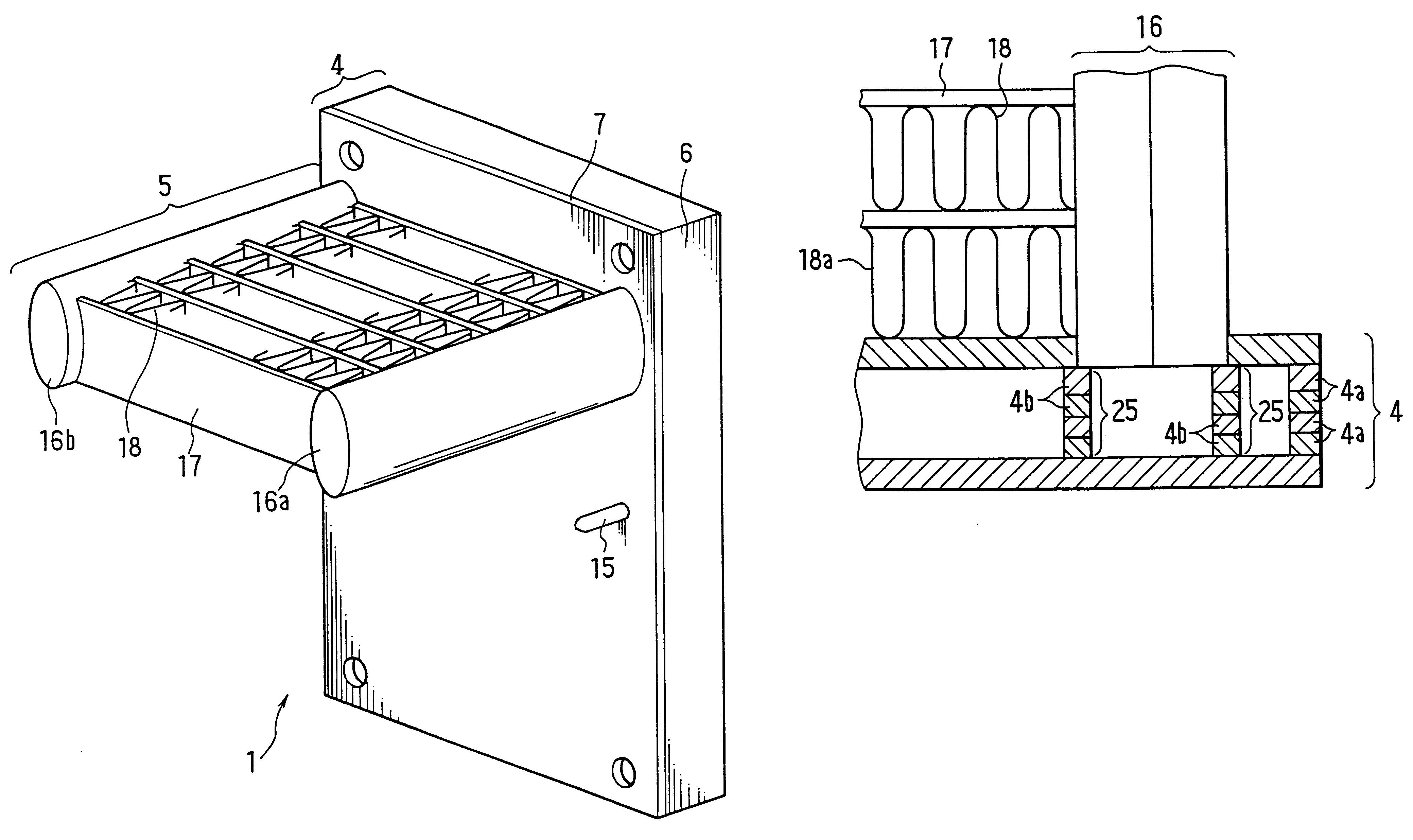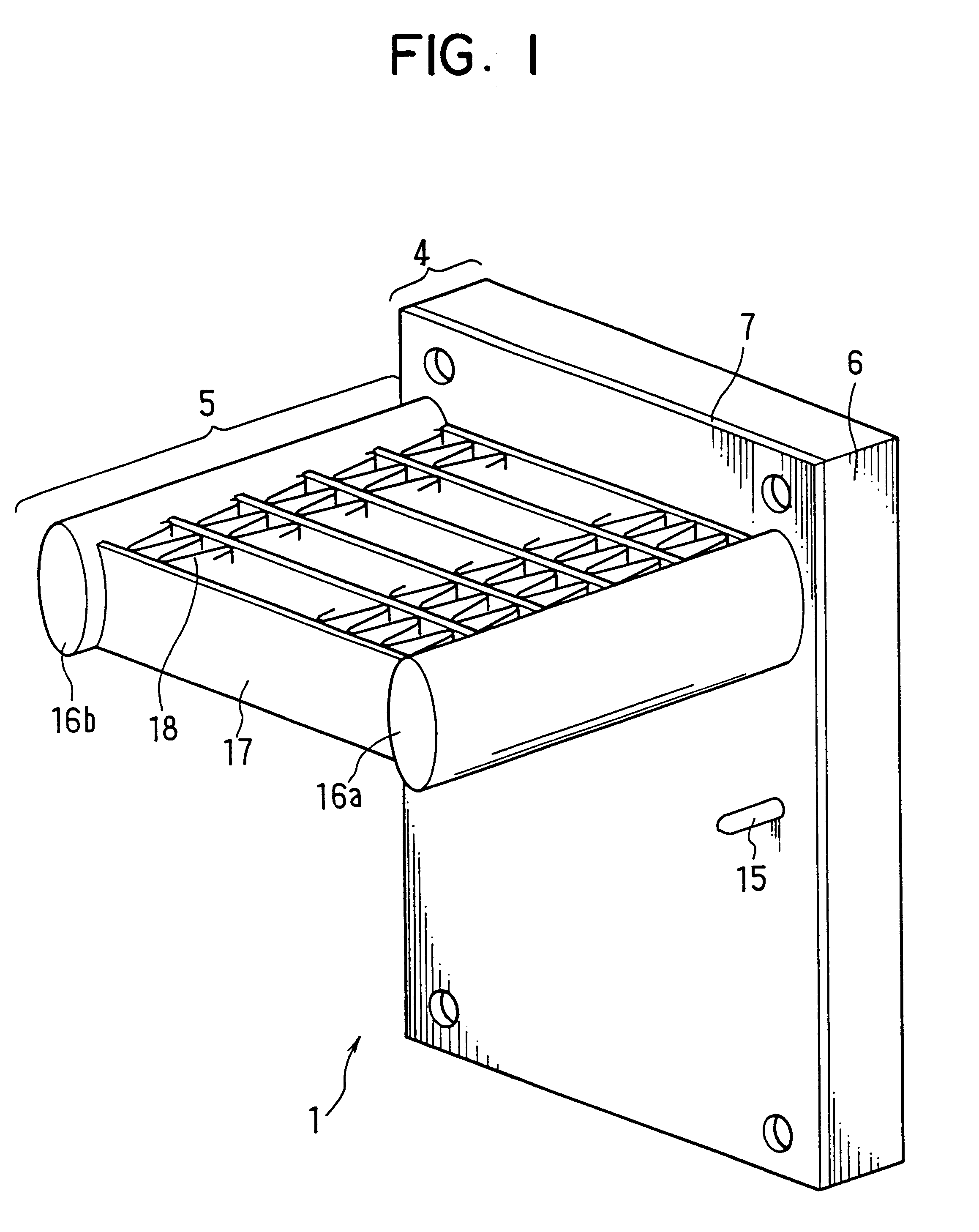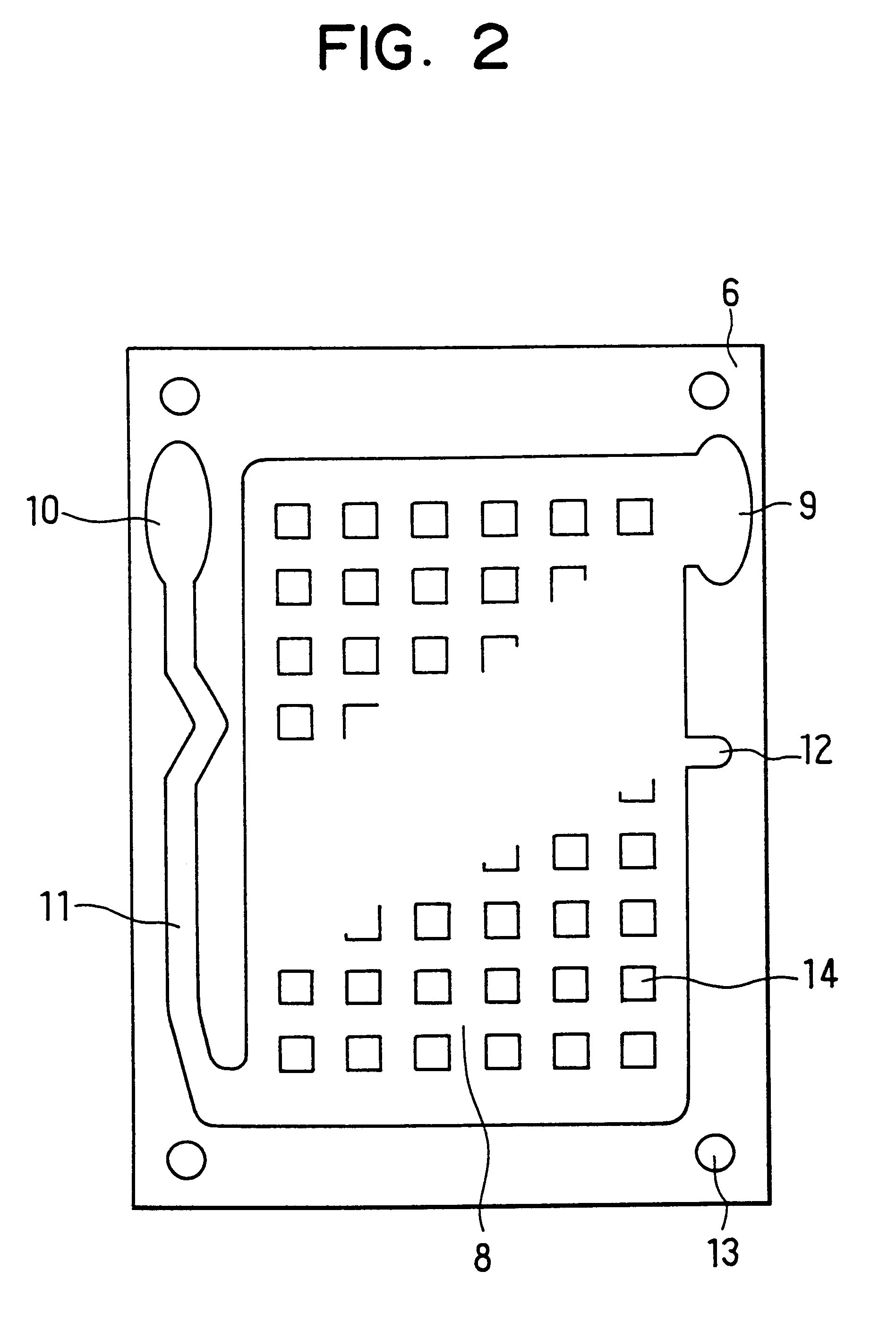Cooling apparatus using boiling and condensing refrigerant
a technology of refrigerant and cooling apparatus, which is applied in the direction of lighting and heating apparatus, indirect heat exchangers, and semiconductor/solid-state device details. it can solve the problems of reducing heat conduction efficiency, affecting the projection of heat-receiving surfaces or refrigerant tanks, and affecting the heat-receiving
- Summary
- Abstract
- Description
- Claims
- Application Information
AI Technical Summary
Benefits of technology
Problems solved by technology
Method used
Image
Examples
example 3
for the restricting insertion length is shown in FIG. 12. In this example, a spacer 22 is interposed between a shoulder 23 formed on the inner header plate 16c and the cover plate 7. The outer header plate 16d is connected to the inner header plate 16c at a right position via the position-setting portion 16e. The insertion length is restricted by the spacer 22, and therefore the radiator 5 is correctly assembled to the tank 4. Alternatively, the spacer 22 may be placed between the shoulder 23 and the bottom surface of the tank 4, as shown in FIG. 13. Though the spacer 22 is placed to support the inner header plate 16c both in the structures shown in FIGS. 12 and 13, the spacer 22 may be placed to support the outer header plate 16d. Further, plural spacers 22 may be used to support both the inner and outer header plates 16c, 16d, a s shown in FIG. 14. In the structure of FIG. 14, no position-setting portion 16e is required. The insertion length of the header tubes is properly restric...
example 5
is shown in FIG. 16. In this example, a recess 24 for receiving the header tank 16 is formed on the cover plate 7, so that the insertion length of the header tank 16 is restricted by the recess 24. In this structure, mechanical strength of the cooling apparatus 1 is enhanced because the bottom end of the header tank 16 can be soldered to the recess 24.
example 6
is shown in FIG. 17, in which spacers 25 are formed integrally with the refrigerant case 6. The spacers 25 support the header tank 16 to restrict its insertion length into the tank 4. The spacers 25 of FIG. 17 may be modified into a form shown in FIG. 18. When the refrigerant tank 4 is formed by laminating several plates 4a, a part 4b of the spacers 25 can be easily formed on the respective plates 4a. By laminating the parts 4b of the several plates 4a, the spacers 25 can be formed. The bottom end of the header tank 16 may be soldered to the upper surface of the spacers 25 to enhance the mechanical strength. In this case, a certain amount of solder is placed between the bottom end of the header tank 16 and the upper surface of the spacers 25, and the height of the spacers 25 is designed so that the insertion length becomes proper when the solder melts and the header tank 16 directly contacts the spacers 25.
PUM
 Login to View More
Login to View More Abstract
Description
Claims
Application Information
 Login to View More
Login to View More - R&D
- Intellectual Property
- Life Sciences
- Materials
- Tech Scout
- Unparalleled Data Quality
- Higher Quality Content
- 60% Fewer Hallucinations
Browse by: Latest US Patents, China's latest patents, Technical Efficacy Thesaurus, Application Domain, Technology Topic, Popular Technical Reports.
© 2025 PatSnap. All rights reserved.Legal|Privacy policy|Modern Slavery Act Transparency Statement|Sitemap|About US| Contact US: help@patsnap.com



